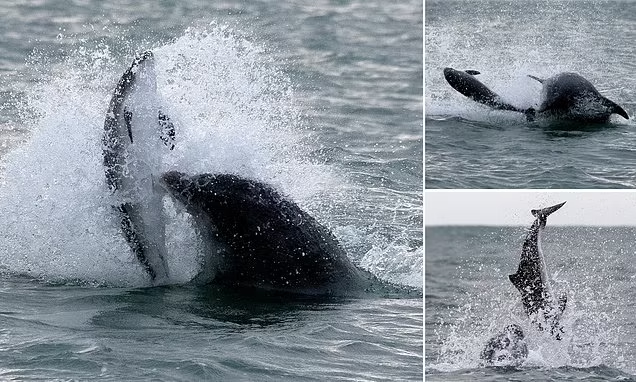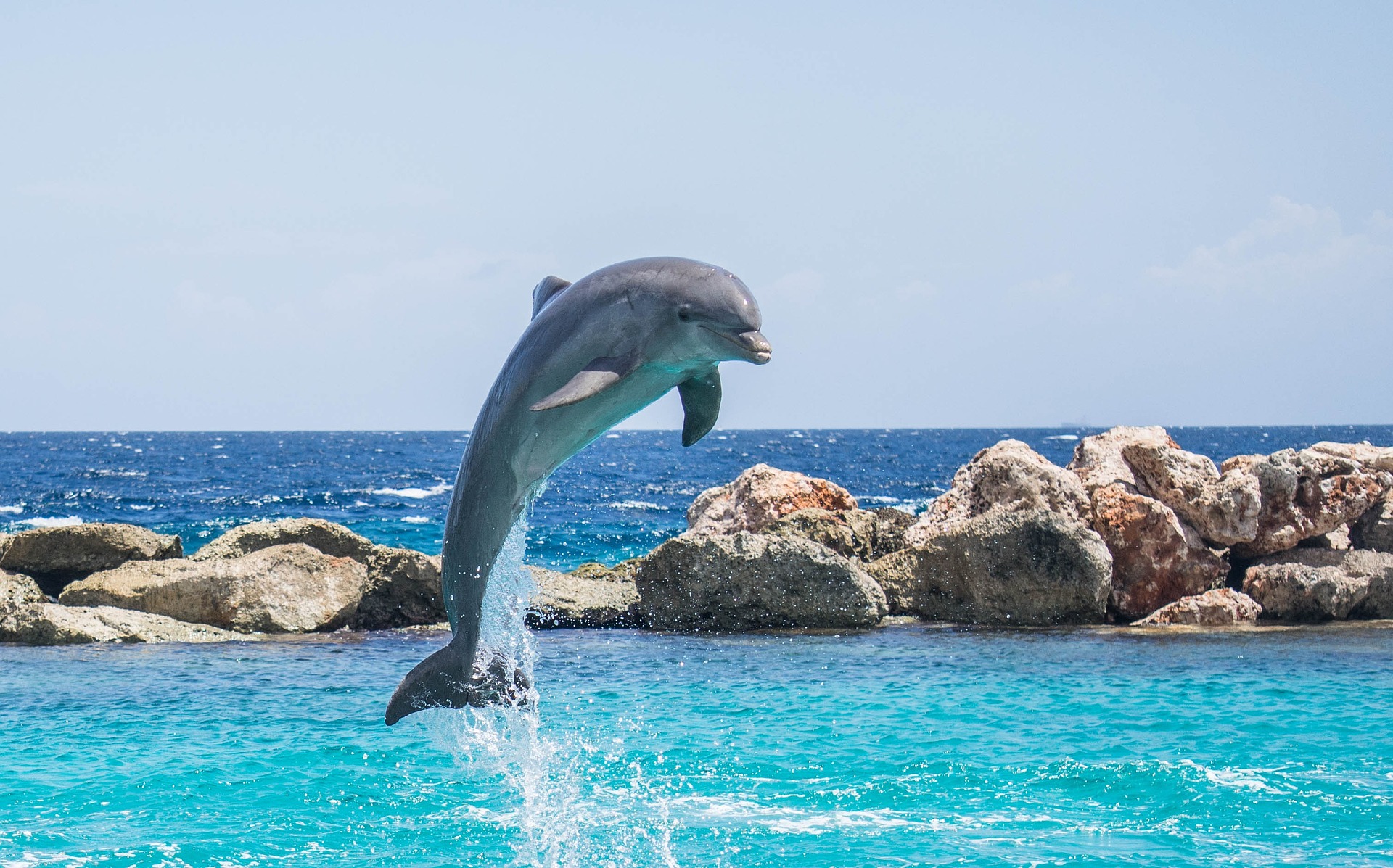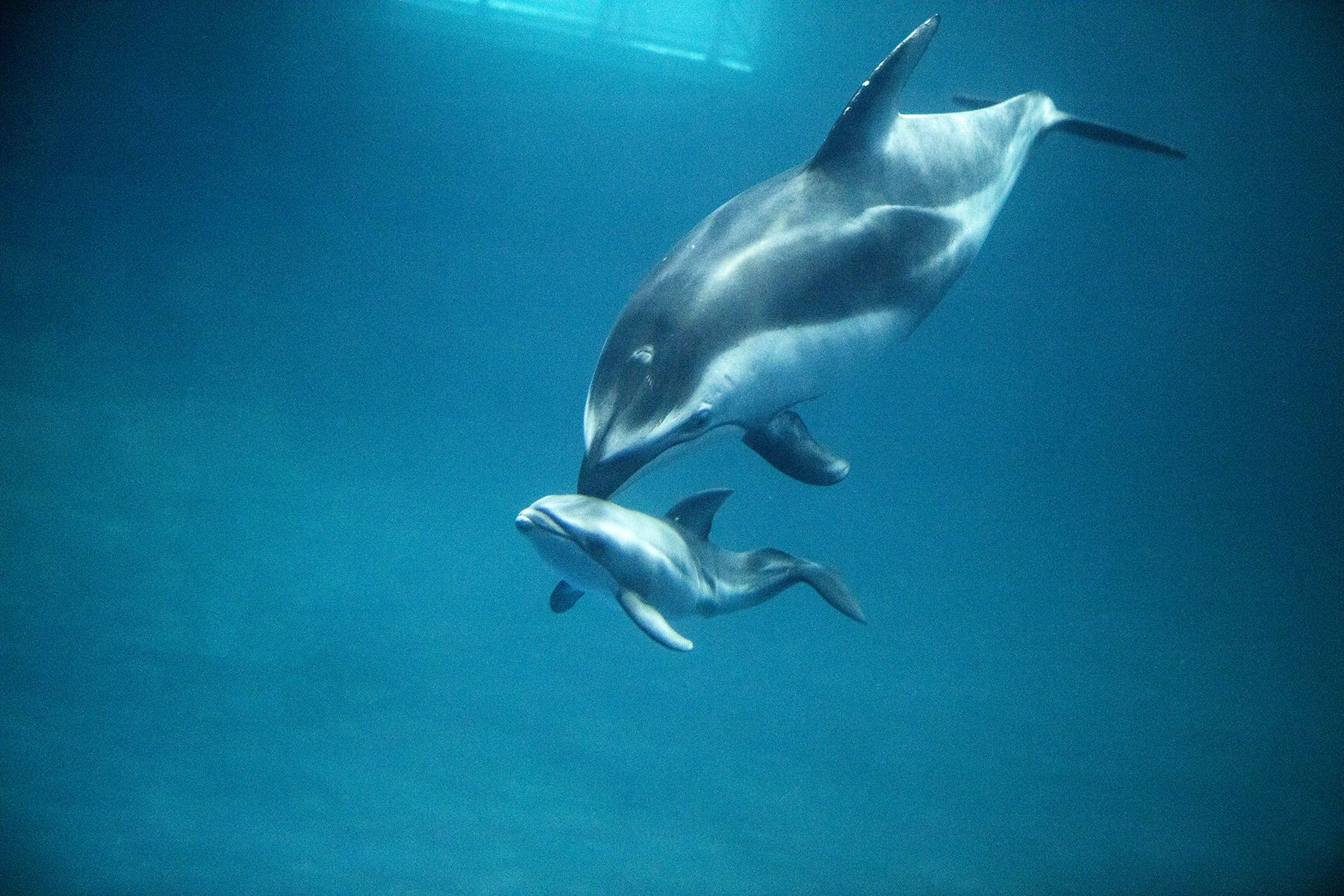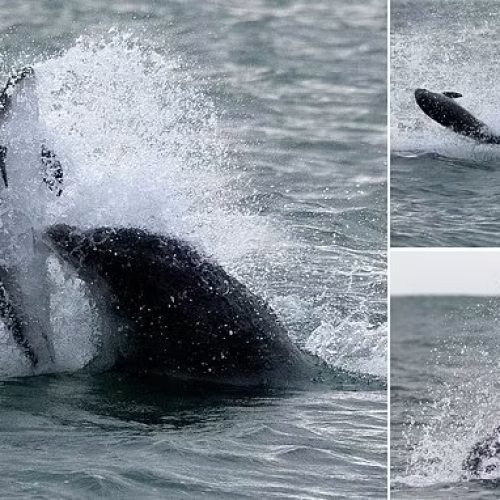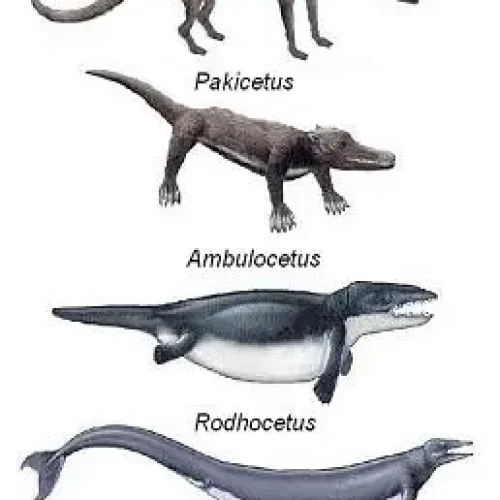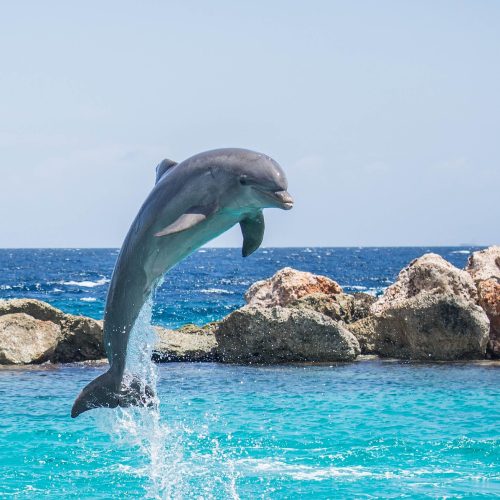Did you know that dolphins give birth to their young in the water, just as humans give birth on land?
But how exactly do these aquatic animals give birth? From courtship to gestation and birth, let’s dive together into the captivating world of dolphin reproduction.
Discover the secrets of their reproductive anatomy, the challenges they face and the strategies they have developed to perpetuate their species in the vast expanses of the ocean.
In this article
HOW DO DOLPHINS GIVE BIRTH? THE REPRODUCTIVE ANATOMY OF DOLPHINS
- The male reproductive system: Male dolphins possess a unique reproductive anatomy adapted for their aquatic lifestyle.
The testes are located internally near the kidneys to maintain the optimal temperature for sperm production.
The penis is retractable and housed in a genital slit, streamlining the male’s body for efficient swimming. During mating, the penis extends to allow for insertion into the female’s genital slit.
- The female reproductive system: Female dolphins have a complex reproductive system well-suited for giving birth underwater. The ovaries are located on each side of the body, near the kidneys.
The female dolphin has two uterine horns that merge into a single uterine body, leading to the vagina and genital slit.
This anatomical design enables efficient mating and gestation. The mammary glands are located on either side of the genital slit, hidden in abdominal slits to prevent drag while swimming.
THE MATING HABITS OF DOLPHINS
Dolphins engage in a variety of fascinating courtship behaviors to attract potential mates. These behaviors can include:
– Synchronous swimming: Male and female dolphins swim in perfect unison, showcasing their compatibility and strength as a potential pair.
– Gentle touching: Dolphins may gently rub their fins or bodies against each other, displaying affection and building a bond.
– Vocalizations: Dolphins use a range of vocalizations, such as whistles and clicks, to communicate their interest in a potential mate.
– Presenting gifts: In some cases, male dolphins have been observed presenting females with gifts, such as sea sponges or pieces of coral, as a courtship gesture.
Once a pair of dolphins has established a connection, they engage in specific mating rituals and strategies:
1. Belly-to-belly swimming: The male and female dolphins swim belly-to-belly, aligning their genital slits for copulation. This position allows for efficient mating while maintaining their hydrodynamic body shape.
2. Multiple mating: Female dolphins often mate with several males during a breeding season, which may help ensure successful fertilization and genetic diversity within the population.
3. Mate guarding: After mating, a male dolphin may stay close to the female, guarding her against other potential mates. This behavior helps increase the likelihood of his sperm fertilizing her eggs.
Dolphins have a gestation period of around 12 months. When a female is ready to give birth, she typically seeks out a calm, shallow area away from the pod.
The birth process is rapid, usually lasting less than an hour. The calf emerges tail-first, a unique adaptation that prevents drowning during the birthing process. Immediately after birth, the mother guides the calf to the surface for its first breath.
The strong bond between mother and calf ensures the newborn’s survival in the challenging marine environment.
THE GESTATION PERIOD OF DOLPHINS
The gestation period of dolphins varies depending on the species. For instance, bottlenose dolphins, one of the most well-known species, have a pregnancy that lasts about 12 months.
Other species, such as the orca (killer whale), which is actually the largest member of the dolphin family, have a longer gestation period of around 17 months.
During the early stages of pregnancy, the dolphin fetus is attached to the mother’s uterine wall through an umbilical cord, similar to human babies.
As the fetus grows, it develops key features such as flippers, flukes (tail fins), and a blowhole.
Interestingly, the fetus grows a set of whiskers on its rostrum (snout) which are believed to help it locate the mother’s nipple after birth, before they fall off.
THE BIRTHING PROCESS OF DOLPHINS
As the due date approaches, pregnant dolphins often seek the company and support of other females in their pod.
These companions, often related to the mother, form a tight-knit group that provides protection and assistance during the birthing process.
When it’s time to give birth, the mother dolphin usually isolates herself from the rest of the pod.
The birth typically occurs tail-first, which is believed to prevent the calf from drowning during the process. The umbilical cord snaps as the calf emerges, and the mother immediately guides the newborn to the surface for its first breath.
After birth, the mother dolphin and her calf form an inseparable bond. The calf relies on its mother’s nutrient-rich milk for sustenance and growth.
Dolphin milk is exceptionally high in fat content, allowing the calf to develop quickly. The mother also teaches the calf essential life skills, such as hunting techniques and social behaviors, to prepare it for life in the wild.
THE CHALLENGES AND RISKS OF DOLPHIN BIRTH
Like any mammal, dolphins can face complications during pregnancy and birth. Issues such as breech births, where the calf comes out head-first, or prolonged labor can pose risks to both the mother and the calf.
However, dolphins have evolved to minimize these risks, and successful births are the norm in the wild.
Newborn dolphins face various threats in their natural habitats. Predators such as sharks and orcas can prey on vulnerable calves.
Human activities, such as fishing and pollution, also pose significant risks to dolphin populations worldwide. Conservation efforts are crucial to protect these magnificent creatures and ensure their survival for generations to come.
Finally, the journey of dolphin birth is a fascinating and complex process that showcases the remarkable adaptations of these marine mammals.
From the lengthy gestation period to the strong maternal bonds and the challenges they face, dolphins continue to captivate and inspire us with their resilience and grace.

